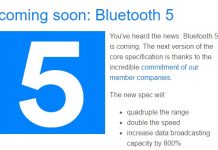 In ’06 major publishing houses individually offered 1,000-3,000 e-book titles and 250-3,000 e-audio ones, and the whole e-book market was $12-$15M, says Publishing Trends, a well – regarded newsletter for industry insiders.
In ’06 major publishing houses individually offered 1,000-3,000 e-book titles and 250-3,000 e-audio ones, and the whole e-book market was $12-$15M, says Publishing Trends, a well – regarded newsletter for industry insiders.
And now? “Many of these numbers have more than doubled,” PT’s April issue reports, “and publishers are increasingly providing digital content in a variety of forms.”
You already know the wholesale revenue stats for e-books of 12-15 trade publishers, provided directly from the International Digital Publishing Forum. Now—beyond the newsletter’s chart reproduced here, showing percentages of March 28 New York Times bestsellers in different formats—here are some other gems from the diligent numbers-crunchers at PT:
- Wiley leads in the number of e-titles now available, 7K, according to PT’s March survey. Other publishers: Random House, close to 7K; S&S and HarperCollins, around 4K; Penguin, a bit under 3K; Harlequin, somewhat over 2K; Hachette, 1K. I suspect that with .epub in use at Hachette as the sole distribution format, the number of e-titles will soon be much closer to those from other majors. Even with Holtzbrinck not included, it’s clear that big-time commercial publishers have a long way to go before they catch up with the public domain total. PD titles exceed more than 1.5 million if you include total scans (even if not all are online right now now, and even if a scan isn’t as usable as a book in, say, .epub). Not to mention all the titles already online from smaller commercial e-publishers! Aren’t the big boys undertaking mass digitization of backlists? Just when will these efforts show in in the stats? I want to see modern classics galore online, not just works published before 1923.
- Random House is the e-audio leader by far with almost 7K titles. Others: S&S, 2K; HarperCollins, 1K; Hachette, fewer than 500; Penguin and Harlequin, probably no more than 200. As with the other stats, I’m working from PT’s bar charts.
- Wiley is the print-on-demand champ with 7K titles. Others: S&S, 3K; Random House, a little over 2K; Hachette, 1,000. Given Wiley’s heavy focus on tech books, where speed is imperative, I’m not surprised.
- Kindle fiction titles from “the extended New York Times bestseller list” for March 30 are cheapest, at $10. Others—averages: Sony, $15; Mobipocket, Microsoft, Adobe and Palm/eReader, all in upper teens or lower twenties. Prices are from the Kindle Store, Sony’s e-book store, eBooks.com (Mobi, Microsoft, Adobe) and the Palm eBook store. In fairness to the nonKindle and nonSony formats, let me point out that some independent retailers are pricing more aggressively than those mentioned as sources.
- Kindle and Sony lead in the number of fiction and nonfiction bestsellers available by format—both around 80 percent. See chart for other formats.
Useful stats, PT, thanks! Yep, there are more numbers in the actual newsletter—for example, nonfiction price comparisons for different formats, as well as statistics related to e-audio, plus numbers telling how generous publishers are with e-book excerpts on sites. Subscription info is here.
Also of interest in PT: Int’l Bestsellers: Fairs! Frauds! Florence!, Industry Ink Slingers (the TeleBlog’s mentioned), Storytelling at South by Southwest 2008, and Search Gets Richer, and Harder.
Detail: I want to check with PT about the 250-3,000 audio titles in ’06. A typo? Was that actually 2,500-3,000? I don’t know.
Update, April 1: PT had it right. Those were numbers for individual publishers, with the 250 being at the low end. I’ve changed the lead of the present post to make that clear.
Technorati Tags: Publishing Trends,IDPF,International Digital Publishing Forum
































My comment relates to the issue of mass digitization of backlists (something I would really love to see as well). Unfortunately, digital rights have only been a standard part of publishing contracts in recent years – without these rights publishers do *not* have the ability to do this. Demand for “modern classics” in e-book format must rise to the level where it is worth the publishers’ while to track down the rights holders and obtain those rights, otherwise we might have to wait until contract-renewal time.
All of this is irrelevant except for the history books.
Just as the mass market didn’t pay attention to microcomputers (Ancient Term Alert!) until the Apple II went on sale, the mass market isn’t interested in ebooks until — yeah, when APPLE does them.
Heck, Mike, E has to start from somewhere. Shudder, shudder, this is an E-focused blog reflecting our regulars’ fondness for a medium relevant to them. OK, now on to your second cup of coffee. Thanks. David